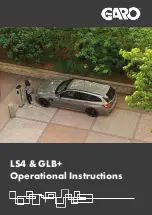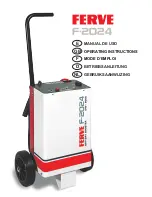
222
Self-help, vehicle care
10. All of the sealant is pumped into the
tyre. Afterwards, the tyre is filled with
air.
11. The prescribed tyre pressure
(see page 280) should be attained
within 10 minutes. Once the pressure is
attained, switch off the compressor by
pressing button
<
again.
If the prescribed tyre pressure is not
achieved within 10 minutes the tyre is
too severely damaged. Park up the
vehicle and contact a workshop for
assistance.
Release excess tyre pressure using
button
]
.
Do not run the compressor for more
than 10 minutes - see important
information on page 223.
12. Dismantle the tyre repair kit. When
removing the sealant bottle from the
holder, press the ratchet on the holder.
Screw the tyre filler tube onto the free
connector on the sealant bottle. This
prevents the sealant from escaping.
Stow the tyre repair kit in the luggage
compartment.
13. Wipe away any sealant spill with
a cloth.
14. Fold up the warning triangle
3
and
place in the luggage compartment –
see page 210.
15. Apply the sticker on the sealant bottle
showing the maximum permitted speed
within the line of sight of the driver.
Sticker – see page 221, Fig. 17469 T.
16. Continue driving immediately so that
the sealant is distributed evenly inside
the tyre. After approx. 6 miles (10 km)
but no longer than 10 minutes, stop
and check the tyre pressure. To do this,
screw an air tube directly to the tyre
valve and compressor.
As long as the tyre pressure is more
than 1.3 bar (19 psi), it may be adjusted
to the prescribed value. Repeat the
procedure until there is no more
pressure loss.
If the tyre pressure has dropped below
1.3 bar (19 psi), the vehicle must not be
used. Contact a workshop for
assistance.
17. Stow the tyre repair kit behind the cover
on the right in the side trim in the
luggage compartment. To close, lower
the cover and engage in the trim.
Ofrecido por www.electromanuales.com
















































